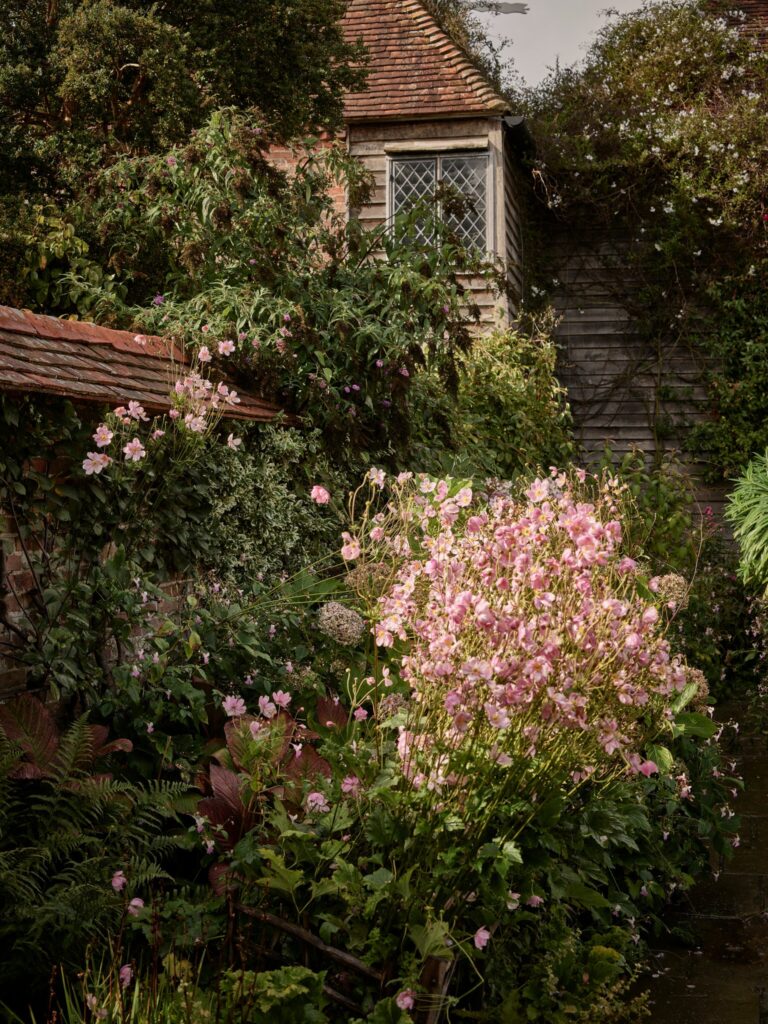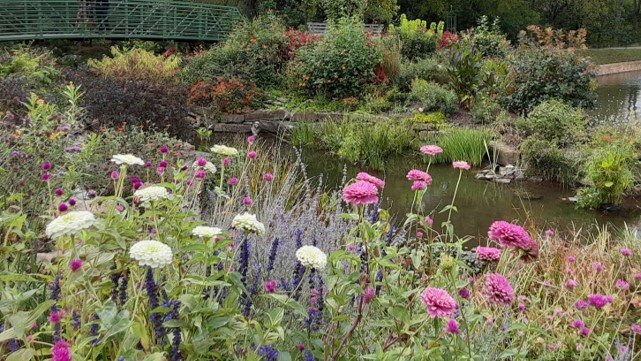My wild garden had a couple visitors recently, good friends whose opinions about it differed. One thinks my garden is a disaster. The other finds it lovely. Who is right?
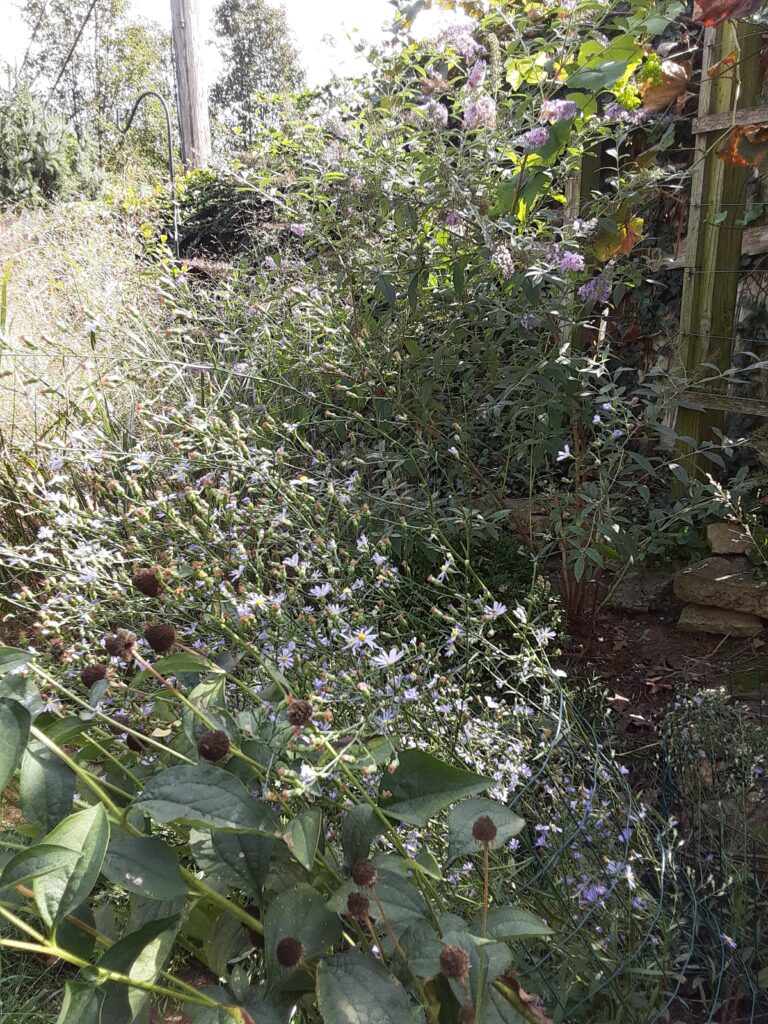
Looking over the shagginess, I think they both are. The rudbeckia that bloomed all summer, delighting us with its insect visitors and wonderful scent, is now a stand of scraggly weeds. The milkweed have flopped over. The switchgrass engulfed a blueberry and crowded out some Russian sage. One of my friends works as a professional gardener, and if her clients’ gardens looked like this, she’d be fired. The gist of her criticism, if I understand it correctly, is that the plants I’ve chosen are the wrong scale for my yard. They’re all back-of-the-garden plants, way too big. Not only that, they’re aggressive. Next year they’ll naturalize all over the place. I can tell she’s right. Rudbeckia is already sprouting in unlikely spots. This means my fantasy of moving them to back-of-the-garden locations is probably just that, a fantasy.
She thinks I should yank it all out and start over.
Could she be wrong? Is she like a jeweler obsessing about tiny flaws that no one else can see? Or could we just have different taste? She likes things tidy, sans weeds.
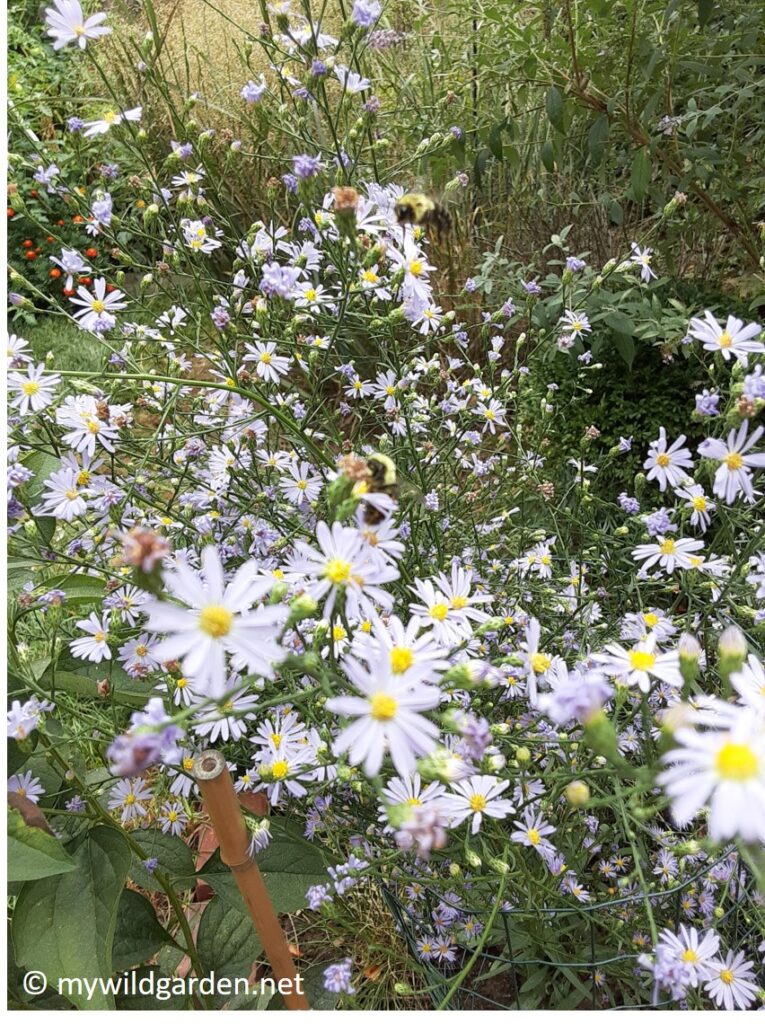
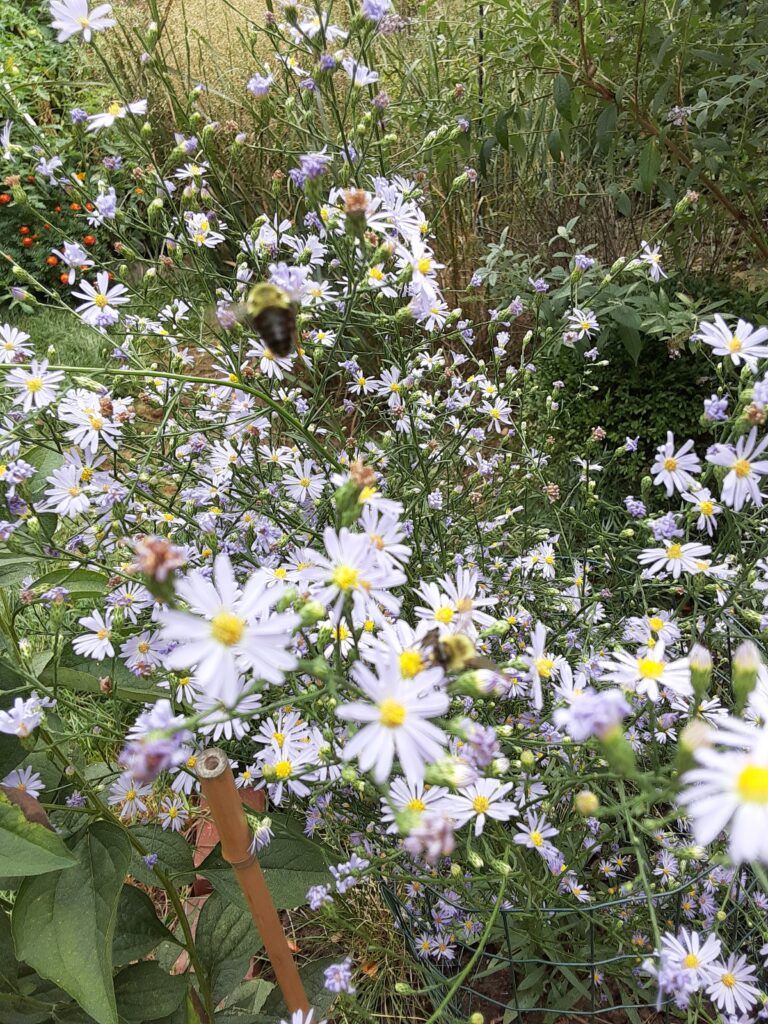
I think it’s unlikely she’s wrong. She is very knowledgeable. Just following her around the yard, watching while she pinches stalks and plunges her hands into dirt, I learn things. The fact is, once I get over feeling amazed that the little three-inch plugs I planted just five months ago have grown to be six feet tall, I’m dissatisfied too. I love these plants, but I might be happier with plants that are similar to these, but smaller.
Two things I’ll definitely take away from this experience. (I’m writing this down so I won’t forget.) Right now I’m so overwhelmed with plants I can’t imagine ever buying another one, but if I do I’ll probably get them from a local or regional nursery instead of ordering online. I just like being able to see what I’m buying. Plus their selections will be tailored to our region. Also, even though I pored over the pages of Tracy DiSabato Aust’s The Well-Tended Perennial Garden that describe pinching and pruning, I was afraid to cut too much. Next year, I won’t be.
And I promise to read the tags.
My other friend reacted to the garden with a sharp intake of breath and a long, “Ohhh.” I suspect she was influenced by the presence of blooms. The asters are misty clouds of purple and white, and in my newly-cleared bed on the east side by the fence I have salvia—red and black-and-blue—and yellow solidago.
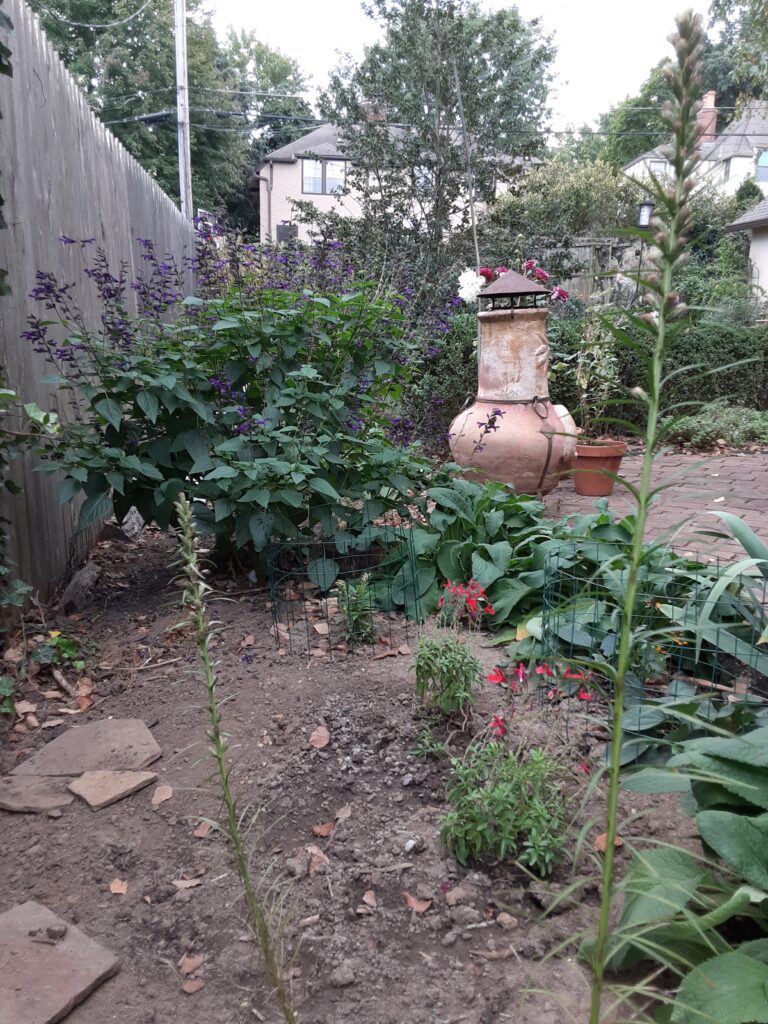
But most of all, she admired the dahlias. I have two kinds: these symmetric, perfect mandalas, and ones with flowers like Phyllis Diller’s wig.
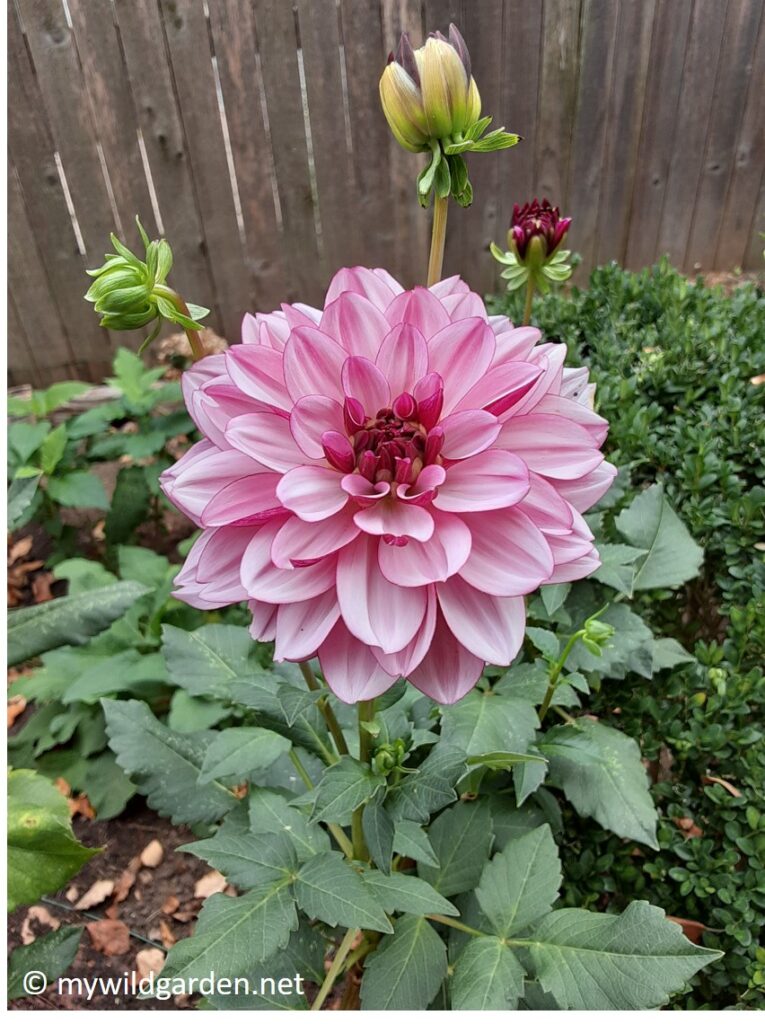
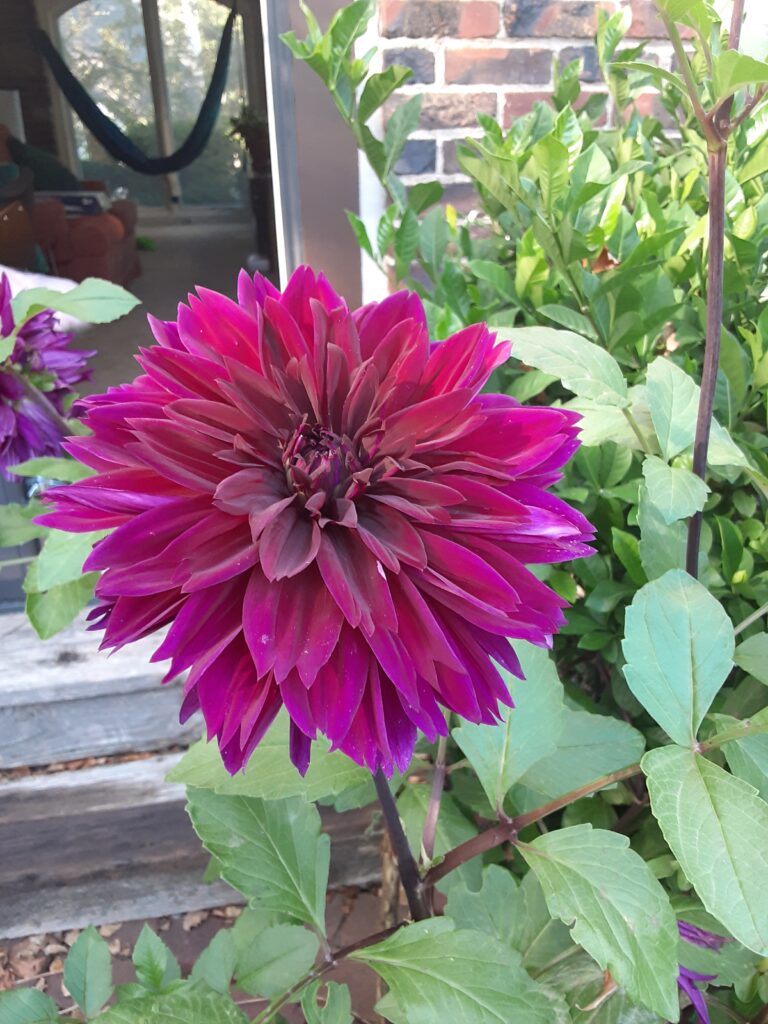
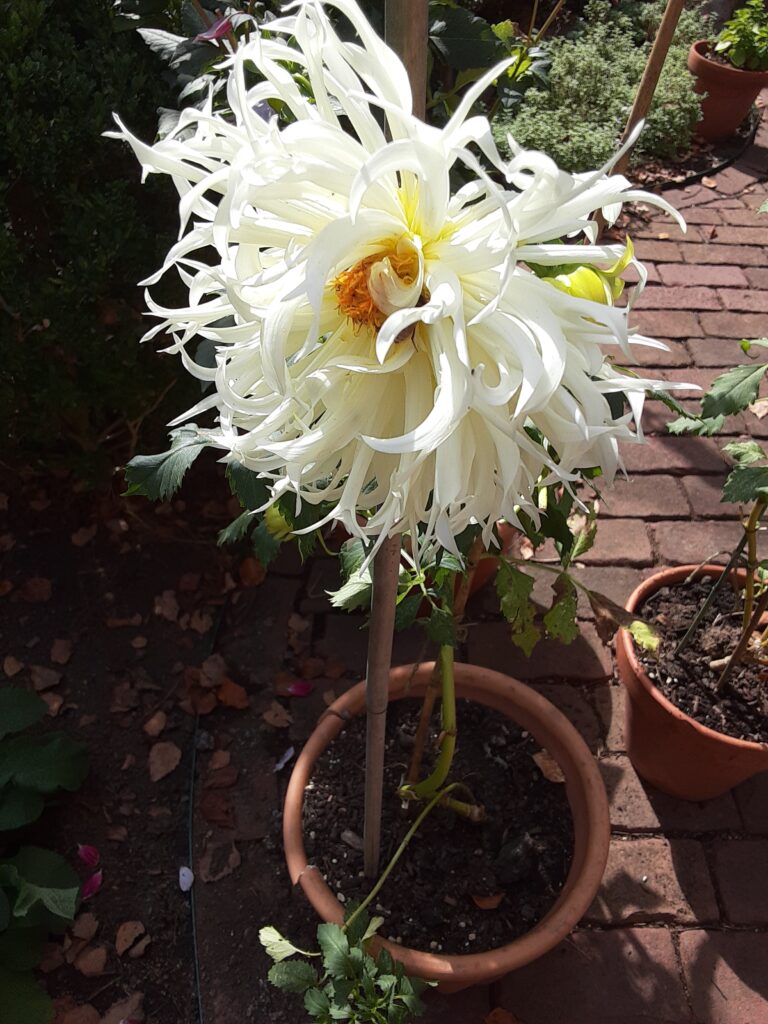
This is my first year growing dahlias. Some were a gift and others I grew from tubers. Although I tried my best to kill them, drowning one plant in a pot without a drainage hole, they persisted, and although the plants have contorted stems and aren’t going to win any awards, the flowers are amazing.
I understand that dahlias inspire cult-like devotion, and I can see why. They’re not native to our area, they originated in Mexican highlands, but they’re still popular with pollinators, especially big bees. I think they’re carpenter bees. Often I find one motionless in the petals, passed-out in bliss.
What do I know about dahlias that I didn’t at the start of the summer? They need to be staked. I was too tentative and slow doing this, and I lost a bunch of stalks in a big windstorm. They need lots of water—fill until the pot begins to drain out the bottom, my gardener friend says. I suspect they need feeding. At a couple times their leaves started looking pale so I added compost to the pot. I’m not sure if that was the right thing to do but they darkened and perked back up.
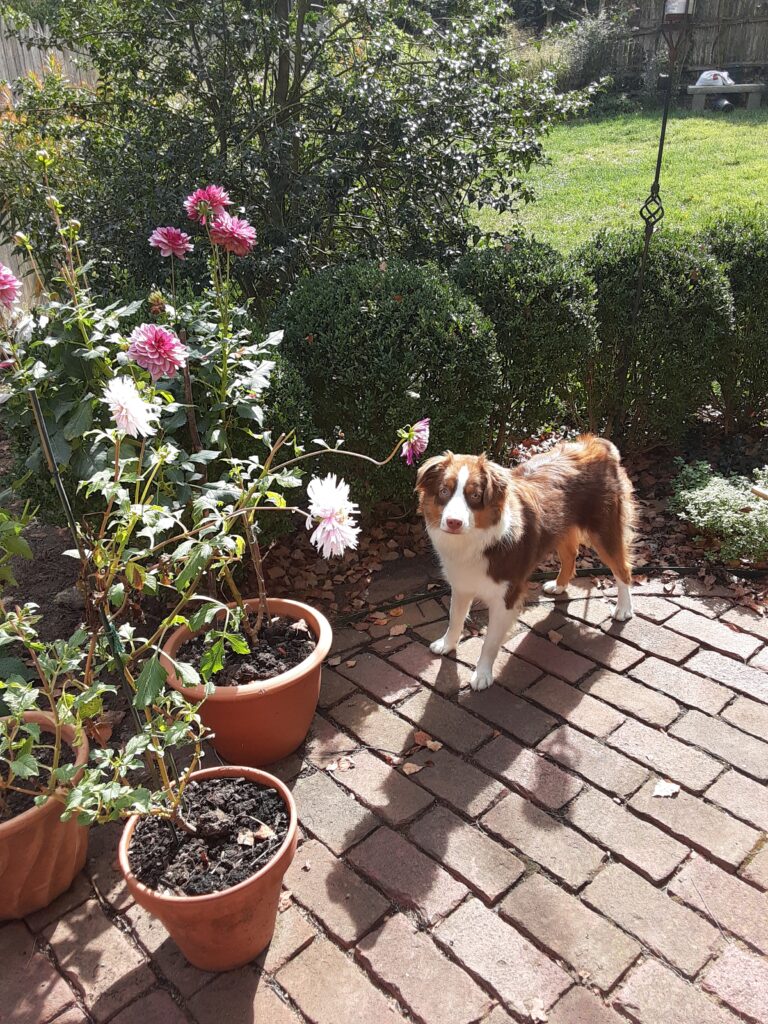
The dahlias are great to have this time of year, when most of the prairie flowers have finished blooming. Usually when we talk about plants looking good, we mean flowering, and the dahlias are blooming now. The plant that got submerged is just getting started. I hope to store the tubers over the winter following these instructions. Next year I’ll try planting them in the ground instead of pots, although I liked being able to move them around. I’ll also try pinching and cutting back, like the experts say to do.
My feelings about the cooler weather are mixed. Yesterday I put on a jacket, and I felt like I’d run into an old work colleague, someone I used to see every day and know well but never really liked that much. I haven’t started preparing to bring plants inside, but I’ve started thinking about preparing. This gardenia will need pruning before I can fit it through the door.
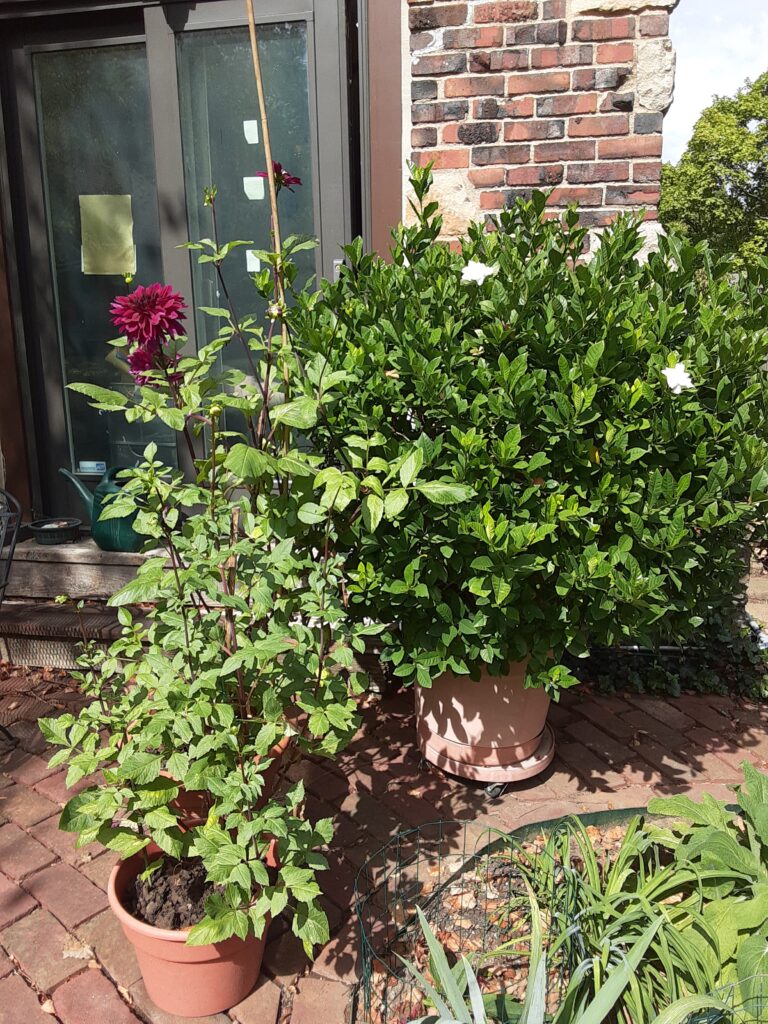
When I was growing up in Houston we had a gardenia growing outside our front door, a spindly, weak-looking thing with just a couple stems, but each year it managed to produce a few spectacular flowers. The fragrance greeted us every time we walked inside. I bought this gardenia at a grocery store about twenty years ago. It’s a tree now.
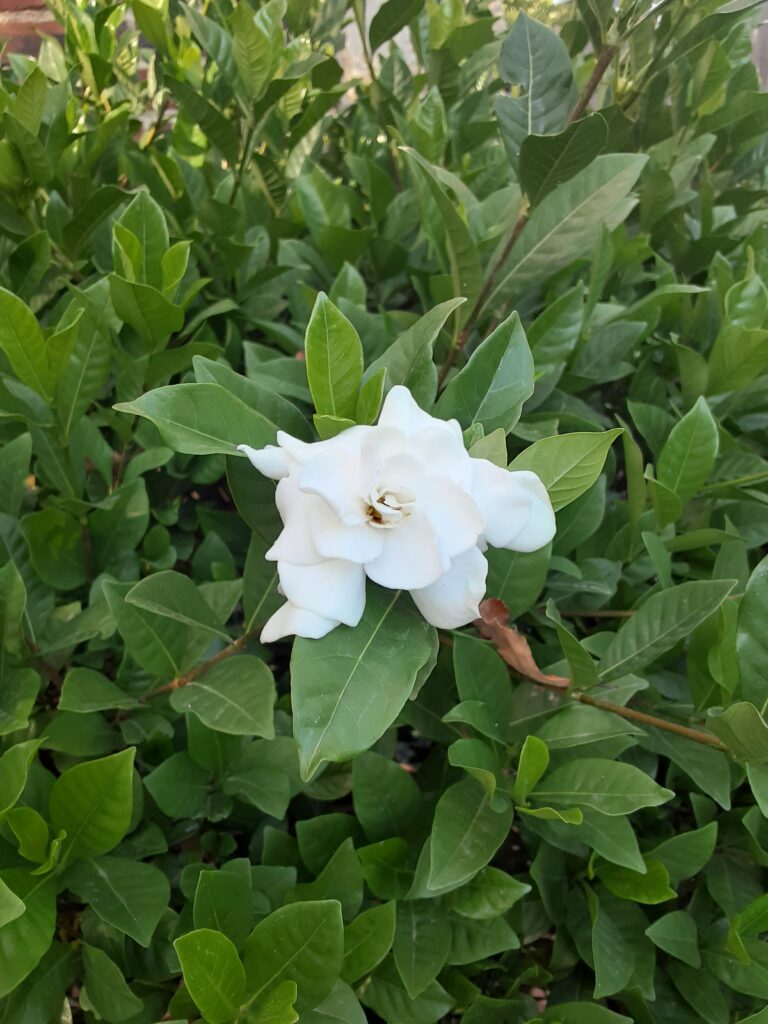
It needs drastic cutting back, but I don’t want to prune while it’s blooming, so I’m waiting until the last minute. I’m also concerned about bringing in whiteflies. They vanished for a while but seem to have returned.
It’s the stock-taking time of year, good for planning ahead and looking back. Even though I don’t love their shagginess, the truth is, I’ve loved these prairie plants and have gotten so much enjoyment out of them this year. I’m even thrilled by how tall they’ve grown. Look! The asters are shoulder-high. The switchgrass is a tawny gold and as tall as the fence. I can see why they called it the tallgrass prairie. The leaves on the river birch are turning yellow one by one. They drip down onto the patio, reminding me of the snowflakes that are coming.
Thanks for reading.
P.S. Did you see this?
At This Renowned English Garden, Getting Your Hands Dirty Is the Point
Meadows. Soil composition. Propagation. Staking and composting. Attending the weeklong horticulture class at Great Dixter is like getting a Ph.D. in gardening.
